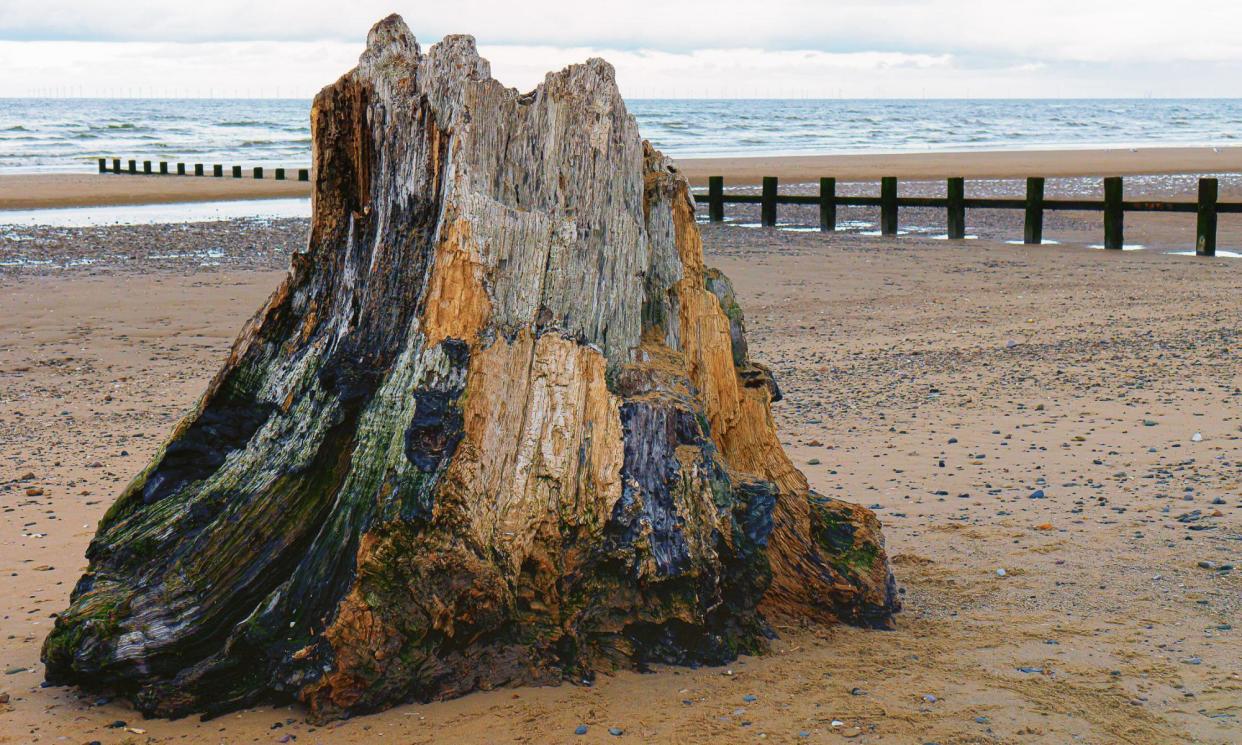Country diary: A drowned land in plain sight

“I must go back to a woollen vest, a woollen vest with sleeves!” my husband shouts – his favourite parody of the John Masefield poem “I must go down to the seas again” – at the fog and flurries of wind, intense rain and sleet as we carefully pick our way down the seaweed-slippery steps to the creamy sand beach at Rhyl. Climate change now means we have more massive winter storms, which scour away the sand to reveal another instance of climate change that struck this coast in the Mesolithic period.
Huge brown tree stumps’ roots crawl like giant fingered hands out of the sand. They are not fossils: spongy to the touch, at least 6,000 years old. They have been preserved here all this time thanks to waterlogging and periodic covering by sand in summers. Larger examples are at Borth and Trearddur.
Related: Prehistoric forest uncovered by storms in Cardigan Bay - in pictures
There are many legends all around Britain’s coastlines of drowned fertile lands and settlements, so that “you can still hear the church bells tolling beneath the waves”. The lost land of Cantre’r Gwaelod (Lowland Hundred) is a Welsh tale in various versions, the oldest dating to 1250. It tells of a fertile land of many orchards that filled a big chunk cut out of the middle of Wales, now known as Cardigan Bay.
But the tree remains at Rhyl beach are identified as oak, pine, hazel and beech, so not fruit orchards, although signs of human activity have surfaced near here too. Martin Bell, professor of archaeological science at Reading University, has done extensive excavations in these areas. He has documented great middens (discarded piles) of mussel shells, and mussels need rocky shores. In addition, a few miles inland, in the sand and mud, he found cockle shell middens from a later Mesolithic date.
So the legend of drowned lands may come from a folk memory of people being forced inland over hundreds of years by an encroaching coastline, caused by huge melting glaciers at the end of the ice age. Just as we are experiencing sea-level rise now due to human activity, it does not happen all at once, so people can make excuses for ignoring it. I wonder what future generations will make of the drowned seafront of amusement arcades at Rhyl in a few thousand years’ time?
• Country diary is on Twitter at @gdncountrydiary

 Yahoo News
Yahoo News 
